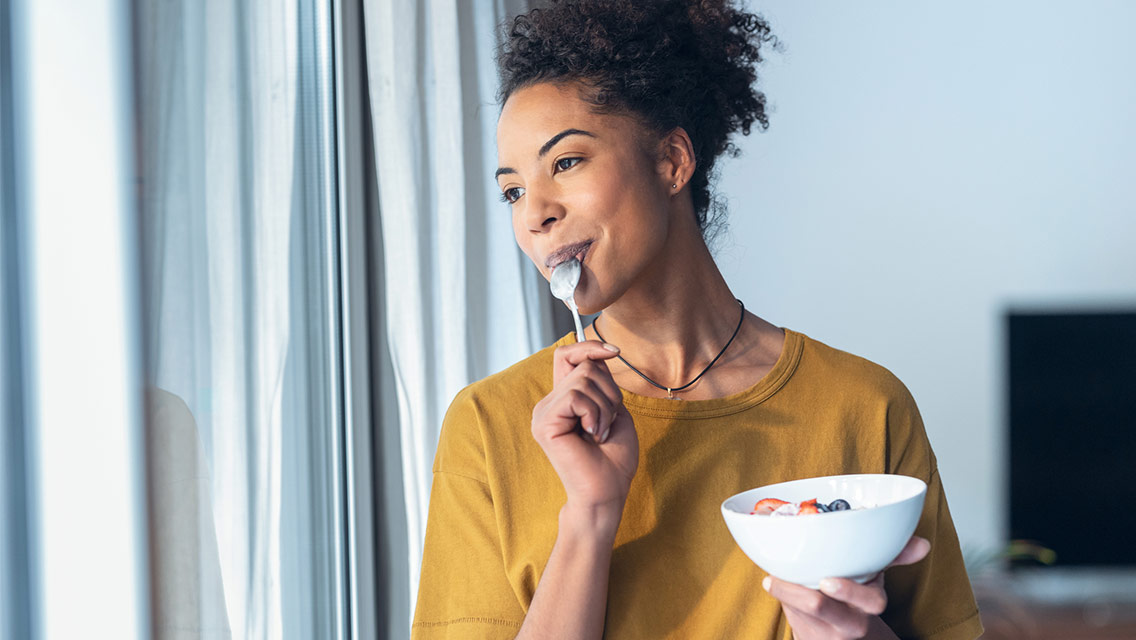Just as important as food triggers are behavioral triggers that can trigger reflux. Both licensed functional nutritionist Jesse Haas, CNS, LN and Cindi Lockhart, RDN, LD, an integrative and functional-nutrition practitioner advise clients with reflux to sit down for meals, eat more slowly, and chew their food until it’s liquid.
“Eating in a relaxed state, so the parasympathetic state is turned on, is so important,” says Haas. “And I recommend thorough chewing to every client with digestive symptoms. Chewing our food well dramatically improves the ability of organs to do their job. Your teeth are the only part of your body that can chew.”
It may also be helpful to reduce meal size to avoid overloading the digestive system. Too much food at one sitting can cause pressure on the stomach’s sphincter, forcing it open and triggering symptoms.
“Eating in a relaxed state, so the parasympathetic state is turned on, is so important.”
Haas and Lockhart both suggest being moderate with beverages at meals, too — no guzzling. “I encourage people to drink less than 4 ounces during a meal,” says Lockhart, as liquids add volume to the stomach, and this added pressure can cause reflux symptoms.
Lockhart notes that being mindful of meal timing is helpful for people with GERD. “Digestion is strongest in the first half of the day and weakest in the second half of day. The old saying ‘Eat breakfast like a king, lunch like a prince, and dinner like a pauper’ is really helpful for reflux.”
Lockhart recommends eating your last meal or snack of the day no less than three hours before you go to bed, to leave plenty of time for digestion. Food that remains in the stomach when you lie down is more likely to create spillover that irritates the esophagus. “If you eat heavy and late, you’re going to have an uncomfortable night.”
It’s helpful to cut back on distractions while you eat, including phones, computers, and TVs. Sit down, take all the time you need to chew your food, and do your best to give your plate your full attention. For some people, just allowing for more relaxed mealtimes can be enough to reduce reflux.
Finally, Lockhart suggests a postmeal stroll. A 10- to 15-minute leisurely walk can do wonders to aid digestion, move food through the system, and help us relax. Any other daily practices that support stress relief, such as meditation, can also help in controlling reflux.
This was excerpted from “5 Ways to Manage Acid Reflux Without Medication” which was published in the March 2023 issue of Experience Life.






This Post Has 0 Comments